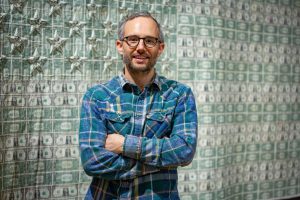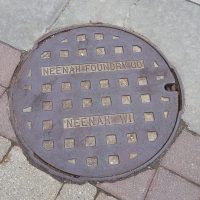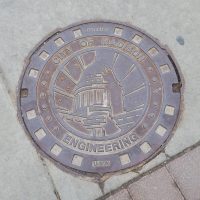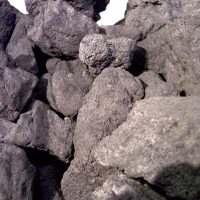
Keith Kaziak is an artist, educator, curator, and community art advocate. He received his BFA from the University of Minnesota-Twin Cities in 2004 and an MA-Art from the University of Wisconsin-Madison in 2021. Kaziak is currently pursuing an MFA degree at the University of Wisconsin-Madison as an Interdisciplinary Artist Research Cohort Fellow.
He is a board member of the Stevens Point Sculpture Park where he serves on the programing, grant-writing, and grounds committees. Kaziak actively exhibits his work regionally, nationally, and overseas, including most recently at The Valade Family Gallery, Detroit, MI, The Backspace Gallery, Madison, WI, The Quad City Art Center, Rock Island, IL, The Trout Museum of Art, Appleton, WI, and CICA, Gimpo-si, South Korea. His work is included in the collections of Acre of Art, The Stevens Point Sculpture Park, The Wausau School Foundation, and the Trout Museum of Art.
Kaziak was recently awarded the International Sculpture Center’s 2021 Outstanding Student Achievement in Contemporary Sculpture Award . Other awards include a 2021 Research Travel Grant-Office of Diversity, Inclusion, and Funding in the Graduate School, the 2021 William J. Wartmann Graduate Sculpture Scholarship-UW-Madison Department of Art, the Interdisciplinary Artist Research Cohort Fellowship-UW-Madison School of Education and Department of Art 2019, 2020, and 2021, and a 2018 Professional Development Grant-UW-Stevens Point Office of Research and Sponsored Programs .
By This Author:

OBJECT HISTORY: Neenah Foundry Manhole Cover
Since opening in 1904, the Neenah Foundry has earned a worldwide reputation for producing manhole covers. Manhole covers are removable lids fitted for tunnels large enough for people to access underground sewer and storm water systems.

Manhole Cover Designs and Contemporary Aesthetics
Over the past 45 years, there has been a growing worldwide fascination and appreciation for the beauty and craftsmanship of manhole covers. Some enthusiasts even created a subreddit aptly titled, Manhole Porn: Sewer covers in all their glory!, celebrating this ubiquitous iron object.

From the Fox River Valley to the Windy City: The Roaring Twenties and the Neenah Foundry
With the City of Chicago flourishing in the 1920s, The Neenah Foundry of the Fox River Valley produced almost all the manhole covers and sewer grates dotting the streets.

An Iron Kinship: Abraham Darby and William Aylward Sr.
In 1872, William Aylward Sr. combined air, coal, and iron ore to produce his first plowshares and other agricultural implements. The founder of what would become the Neenah Foundry followed a process developed by an English man named Abraham Darby more than a century prior.